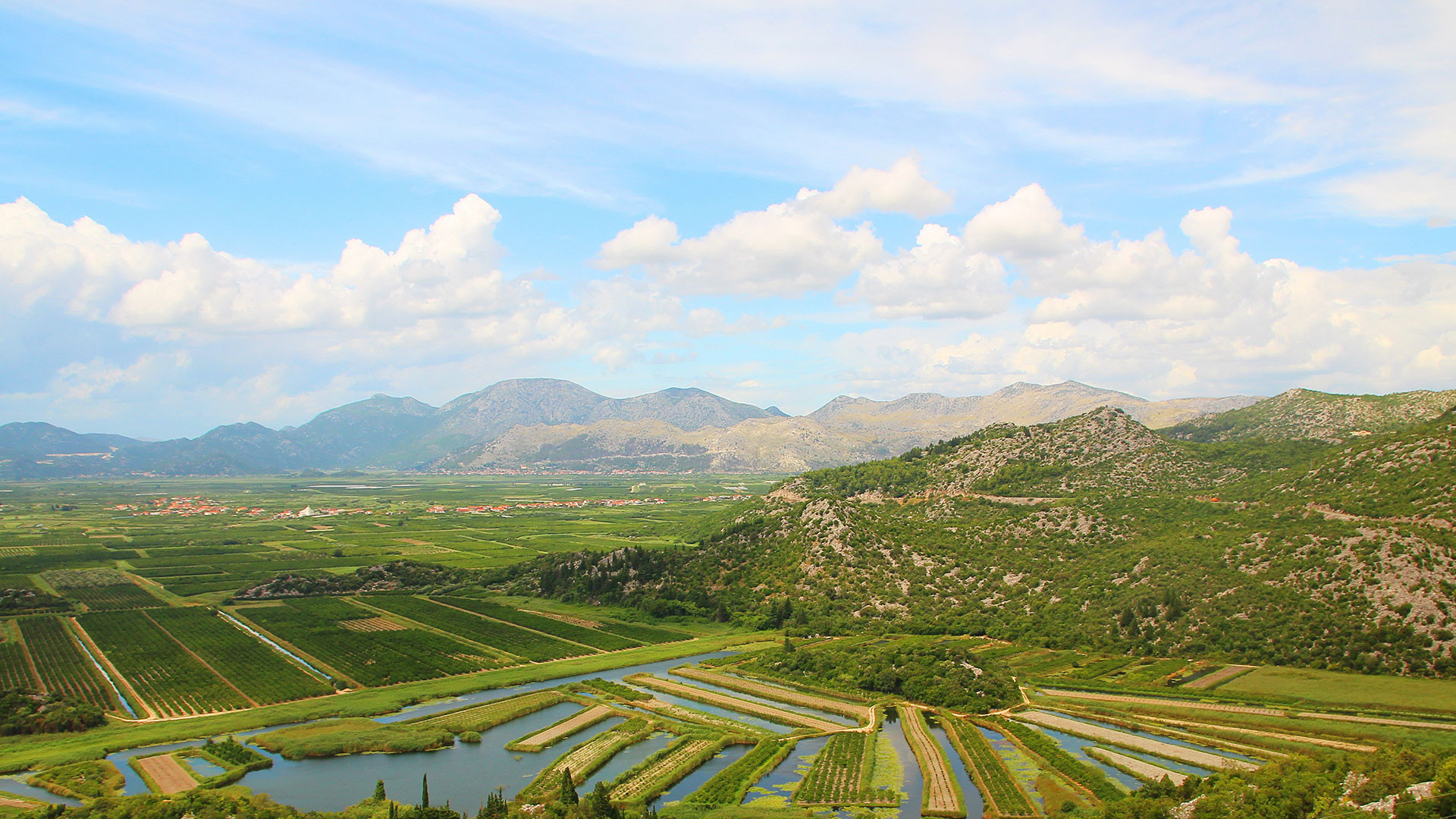
The Neretva Valley - Gardens of Dubrovnik Region
From the first time you lay eyes on the Neretva Valley you’ll have the “wow effect,” and for good reason. The highway snakes along the coastline and then, almost in a Western movie, turns through a high mountain ridge and in a flash a panorama of a vast plain opens up before you. The Neretva River spears through this enormous expanse, like an arrow piercing through the air, long and straight. Stop for a while to take in and admire the view and it will become clear that this mighty river has been beavering away for centuries, slowly but surely forging a path to the Adriatic Sea.
And what nature has brought, man has profited from. Known by many as the “mandarin valley” the Neretva basin’s rich soil, from years of sediment, has brought many a successful harvest for the inhabitants. Over the generations families have worked the land, cut their own channels from the Neretva River to feed their crops. The combination of rich soil and a constant supply of fresh water is a winning one. This region is the garden of Dubrovnik. These fields and plantations have supplied the Dubrovnik region and beyond with high quality fruit and vegetables. It is estimated that there are 1.4 million mandarin seedlings in the valley, producing over 60 tonnes of mandarins every year. Harvest time in the valley means all hands to the pumps. And it isn’t only the locals that pluck the fruit from the trees, tourists are also invited to help, let’s face it there is plenty of fruit to go around. As you drive through the valley you will notice roadside stands selling all kinds of local produce, from the tree to your mouth. Apples the size of melons, melons the size of beanbags, ruby sweet cherries, oranges that drip in flavour and juicy lemons, all of this and more grow in the Neretva Basin.
From its humble beginnings in the mountains of Bosnia and Herzegovina the Neretva River plays an important role in the life of the people it touches. It provides drinking water, drives hydroelectric power stations, is used as a means of transport and feeds the crops of the Neretva valley. Its final meeting with the Adriatic is a crescendo after its long journey. The river estuary opens its wide mouth to the sea and is still somewhat undiscovered by visitors to the region. Wetlands, marshes and lagoons that form as the river empties into the sea are abundant with wildlife, if you are a bird lover then the expansive estuary is a must see. Kingfishers, Oystercatchers, egrets and herons, amongst others, all live in harmony and in relative solitude in this stunning nature.
The river has also shaped the inhabitants, shaped their future and their past, brought trade, caused conflict and also prosperity. The Romans discovered the area and built a stronghold in the 1st century. The remains can still be seen today in the Narona archaeological museum where you will see relicts of an ancient civilization. In fact the Narona museum is the only one in the whole of Croatia that is constructed at the site of a Roman temple. The towns of Metkovic and Opuzen both lie on the banks of the Neretva River and have traditional restaurants offering the best of Neretva cuisine. Eels and frogs are a local specialty, as well as game and seafood. And if you really want a taste of Neretva then try the highly acclaimed “Nerevta Brodetto,” a stew like no other.
Neretva Valley will leave you with a smile on your face and a sense of harmony with nature. We'd also recommend taking a few bags of those juicy mandarins back with you!
